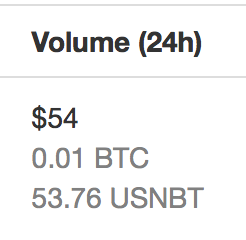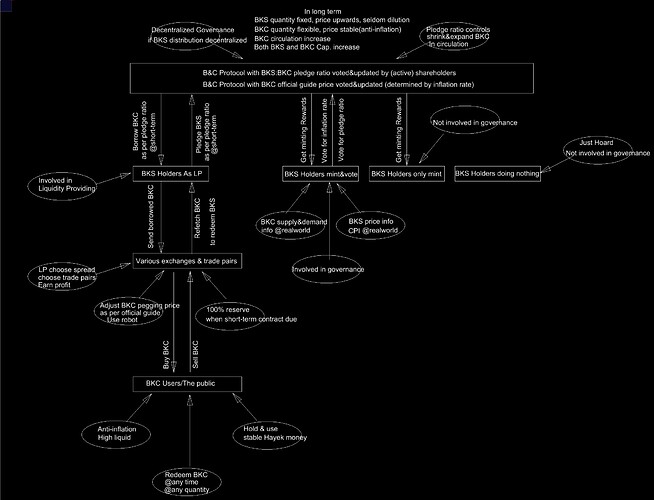Thanks @Sabreiib for that thoughtful and insightful post. I agree with almost everything you have said, and I think what you are saying is important.
There are just a couple clarifications I would like to make:
I am sorry if my previous communication lead to misunderstanding. I am not suggesting holding decentralization as a value is incompetent. Rather, I am observing many key forum posters that have expressed decentralization as something they value highly have actually effectively opposed decentralization with their actions.
Decentralization has many characteristics. Some are good. Some are bad. Whether particular characteristics are good or bad may depend on the context a great deal. Consider the present context of Nu: our blockchain protocol to control creation of assets and authorize blockchain transactions is indisputably purely peer to peer, with control shared by all NuShare holders with at least $25 of NuShares (at today’s price), in proportion to the size of their NuShare holding. The protocol can’t be decentralized further, without doing something that would remove Nu from the realm of proof of stake. I haven’t heard anyone suggest our protocol needs to be decentralized. That is really important not to lose sight of. When I became Chief of Liquidity Operations and created a hierarchically organized group to provide liquidity, I didn’t change the decentralized blockchain protocol in any way. In fact, I presided over a radical dilution of NuShare holders by more than tripling the number of NuShares circulating in 2016 by offering them for sale in completely public venues, accessible to all. The current degree of decentralization of NuShare ownership could only be limited by the number of people interested in putting up $2 or more for a stake.
So when we talk about the lack of decentralization at Nu, we are talking about what is going in one department that decentralized shareholders have consistently supported though our decentralized blockchain protocol. Now back to the notion there are some costs and problems with decentralization. One of those is expense that comes from redundancy that is inherent in decentralization. A second is that participants tend to be less informed and have less expert knowledge as decentralization matures. Thirdly, participants in decentralized systems tend to have less at stake than in centralized systems. These three drawbacks are key to understanding why liquidity operations needed to be centralized in recent times.
Every liquidity provider and multisig signer must be paid one way or another. With robust decentralization, that can be really expensive. Nu was spending a large share of its operation costs on this two years ago. Despite the high expense, compensation to each participant was quite insufficient. We didn’t pay enough to get reliable, professional people with the kind of economic knowledge they need to make decisions about how to operate in NuBit markets. It surprised me, but it appeared no one involved had an understanding of how the market would react to various market interventions. I understood those dynamics due to my professional background, but failed to comprehend how specialized this knowledge is. We discovered monetary policy, even something as simple as maintaining a peg, requires expert guidance. Paying even a few people with this expertise is completely unaffordable at this time. Even I am part time. Esko and I have a great deal at stake. How about failed signers like @woodstockmerkle and @masterOfDisaster? We don’t know that they had anything at stake. That was a mistake. We allowed the founding principle of the network, proof of stake, to be violated.
So, decentralization adds certain types of strength and reliability. But it is also presents a host of risks and costs that have to be managed. It may be that the costs of properly mitigating those risks is greater than the benefits of decentralization in liquidity operations in some contexts. That doesn’t mean it will always be that way. It depends on a variety of factors, perhaps the most important of which is the quantity of resources that can be brought to bear.
The decentralization of handling shareholder funds is at hand: I aim to have multisig signers who prove a stake in NuShares, are dependent on Nu for their livelihood at the present time, have a proven history of responsible and compliant actions, have clear and well thought out contracts with shareholders, will subordinate to expert decisions, demonstrate a commitment to contract law, have a human relationship with one another, among other things. It is a demanding list. It is a complicated undertaking that takes time. I understand that delaying an implementation brings large risks, as does a poor (and rushed) implementation.
Recently, things like reviving B&C Exchange and hiring new people to work on Nu’s problems has been a higher priority to me. Everything takes longer than anyone would like, including me. To all of you who care, please consider creating solutions rather than complaining about some problem we haven’t solved yet. Remember, our decentralized governance model will empower and compensate anyone who can convince shareholders they are bringing value to the network.
I have brought a design of good decentralized liquidity(modified Hayek model), but still no enough support from this forum.
I suspect you are being a bit too impatient. I think there is a lot of support and interest. It is a big undertaking, among other big undertakings that are splitting our attention. I can tell you Esko and I have had detailed discussions about Hayek money and our options for implementation of one, in just the last week.
I don’t recall you presenting a design with enough specificity to be suitable for implementation. If I missed it, please link to it.
It is a medium term objective of mine to release a currency on the Nu blockchain that is both more stable, and maintains it’s value better than USD or CNY (and USNBT and CNNBT). There are many details to attend to. I wish I could get it done faster, too.

